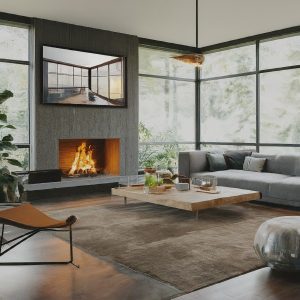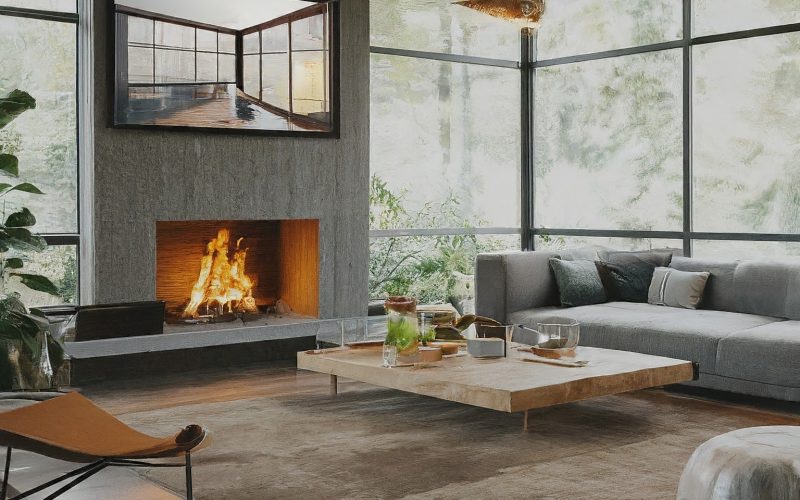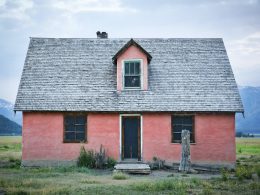America’s architectural landscape is a rich tapestry woven from various styles, each telling a unique story of the nation’s history, culture, and evolution. From the stately brownstones of the East Coast to the charming bungalows of the West, these architectural gems reflect the diversity and creativity of American design. This article delves into the distinctive characteristics, historical significance, and regional variations of these iconic structures, offering a comprehensive overview of their enduring appeal.
The Elegance of Brownstones

Historical Context
Brownstones, primarily found in the northeastern United States, especially New York City and Boston, emerged in the mid-19th century. They are named for their distinctive brown sandstone facades, which were a popular building material due to its availability and relatively low cost. These row houses became synonymous with urban sophistication and middle-class prosperity.
Architectural Features
Typically, brownstones are three to five stories tall, featuring stoops (elevated entry steps), high ceilings, and ornate detailing such as cornices and window moldings. The interiors often boast spacious rooms, wooden floors, and elaborate woodwork, reflecting the Victorian influence prevalent during their construction.
Cultural Impact
Brownstones are more than just homes; they are cultural landmarks. They have been featured in countless films and television shows, symbolizing urban life and elegance. Their preservation has become a significant aspect of urban planning and heritage conservation in cities like New York and Boston.
The Charm of Bungalows
Origins and Spread
Bungalows originated in Bengal, India, and were adapted by the British during the colonial period. The style was imported to America in the early 20th century and quickly spread, particularly in California and the Midwest. The American Craftsman movement, which emphasized handcrafted simplicity and natural materials, greatly influenced their design.
Architectural Characteristics
Bungalows are typically one or one-and-a-half stories tall, with low-pitched roofs, wide eaves, and large front porches. The interiors are designed for efficiency and comfort, featuring built-in cabinetry, exposed beams, and open floor plans. The use of local materials and integration with the surrounding landscape are key aspects of their charm.
Popularity and Influence
The bungalow’s rise coincided with the growth of suburban America, offering affordable, practical housing for the burgeoning middle class. Their widespread appeal is evident in numerous bungalow neighborhoods across the country, many of which are now protected as historic districts.
Regional Variations
East Coast: Brownstones and Beyond
While brownstones dominate cities like New York and Boston, the East Coast is also home to other architectural styles such as the Federal and Georgian styles in older cities like Philadelphia and Charleston. These styles are characterized by symmetry, classic proportions, and decorative elements like pediments and columns.
Midwest: The Heartland of Bungalows
In the Midwest, particularly in cities like Chicago and Minneapolis, bungalows became a standard form of housing in the early 20th century. The Prairie School movement, led by architects like Frank Lloyd Wright, also influenced Midwestern architecture, emphasizing horizontal lines and natural materials.
West Coast: Craftsman Bungalows
California’s temperate climate and scenic landscapes provided the perfect backdrop for the Craftsman bungalow. Cities like Pasadena and Los Angeles are renowned for their extensive neighborhoods of these charming homes, which often feature stucco exteriors and intricate woodwork.
Preservation and Modern Adaptations
Historic Preservation Efforts
Both brownstones and bungalows have been the focus of significant preservation efforts. Organizations like the National Trust for Historic Preservation and local historical societies work tirelessly to maintain the integrity of these architectural gems. Historic districts, tax incentives, and grants are some of the tools used to encourage preservation.
Modern Adaptations
In contemporary architecture, there is a growing trend to blend traditional styles with modern amenities. Renovated brownstones often feature updated kitchens and bathrooms while retaining their historic charm. Similarly, bungalows are being adapted with modern insulation, energy-efficient windows, and smart home technologies, ensuring they remain functional and desirable in the 21st century.
Analysis Table: Brownstones vs. Bungalows
| Feature | Brownstones | Bungalows |
|---|---|---|
| Typical Height | 3-5 stories | 1-1.5 stories |
| Roof Style | Flat or slightly pitched | Low-pitched |
| Common Materials | Brown sandstone, brick | Wood, stucco, local materials |
| Architectural Influence | Victorian, Italianate | Craftsman, Prairie School |
| Key Interior Features | High ceilings, elaborate woodwork | Built-in cabinetry, exposed beams |
| Typical Location | Northeastern cities (NYC, Boston) | California, Midwest (Chicago, Minneapolis) |
| Historical Period | Mid-19th century to early 20th century | Early 20th century |
| Cultural Significance | Urban sophistication, middle-class prosperity | Suburban growth, middle-class affordability |
Comparative Table: Regional Variations
| Region | Dominant Style | Key Characteristics | Notable Cities |
|---|---|---|---|
| East Coast | Brownstones | Brown sandstone facades, high stoops, Victorian detailing | New York City, Boston |
| Midwest | Bungalows | Low-pitched roofs, wide eaves, Craftsman influence | Chicago, Minneapolis |
| West Coast | Craftsman Bungalows | Stucco exteriors, intricate woodwork, integration with nature | Los Angeles, Pasadena |
| Southern US | Federal/Georgian | Symmetry, classic proportions, decorative elements | Charleston, Savannah |
Conclusion
From the stately brownstones of the East Coast to the cozy bungalows of the West, America’s architectural diversity is a testament to the country’s rich cultural heritage and evolving tastes. These iconic structures not only provide insight into historical living conditions and societal values but also continue to influence contemporary architectural practices. Whether preserved as historical landmarks or adapted for modern living, brownstones and bungalows remain enduring symbols of American architectural ingenuity and beauty.












